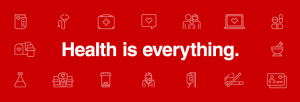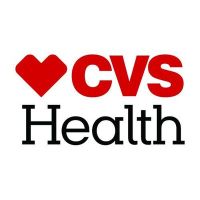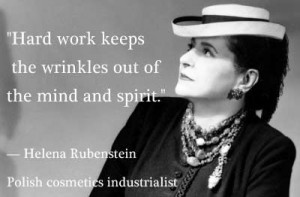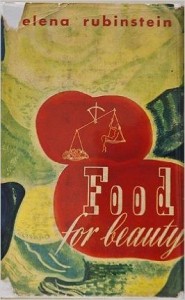 CVS is expanding the beauty aisles in stores, along with adding fresh and refrigerated foods and healthy snacks to its offerings. This is part of the company’s re-positioning in its post-tobacco mission, having re-branded from CVS/pharmacy to CVS Health last year. (You can read more about this strategic transformation here in Health Populi and here in my Huffington Post column).
CVS is expanding the beauty aisles in stores, along with adding fresh and refrigerated foods and healthy snacks to its offerings. This is part of the company’s re-positioning in its post-tobacco mission, having re-branded from CVS/pharmacy to CVS Health last year. (You can read more about this strategic transformation here in Health Populi and here in my Huffington Post column).
When CVS made this announcement, a portfolio manager for Gabelli Funds noted that health and beauty products have very high profit margins. These margins will be useful as CVS replaces the tobacco sales lost last year when the company went tobacco-free.
CVS’s sales of health and beauty products have been fast-growing over the past 3 years, according to Helen Foulkes, CVS EVP. She is quoted in an AP story that, “Women talk a lot about feeling good and looking good.”
 As part of the growing focus on beauty, CVS will launch three new lines: Jouviance, a Canadian dermatologist-test skin care brand; Wilma Shumann, a “European-inspired” treatment-based brand; and, Promise Organic. The Jouviance line will range from $22 to $69 and target the anti-aging market. In total, CVS plans to bring 1,200 new products into the beauty department. They also plan to have in-store beauty consultants; I imagine these will be akin to the advisors found in Sephora and Ulta to provide counsel (and up-sales).
As part of the growing focus on beauty, CVS will launch three new lines: Jouviance, a Canadian dermatologist-test skin care brand; Wilma Shumann, a “European-inspired” treatment-based brand; and, Promise Organic. The Jouviance line will range from $22 to $69 and target the anti-aging market. In total, CVS plans to bring 1,200 new products into the beauty department. They also plan to have in-store beauty consultants; I imagine these will be akin to the advisors found in Sephora and Ulta to provide counsel (and up-sales).
Beauty care is now a key to retail growth, according to Euromonitor and the NPD Group.
Health Populi’s Hot Points: The 2008 Edelman Health Barometer found that people define overall health in terms of physical, mental/emotional, financial, and physical appearance. Clearly, this last category underlies CVS’s big bet on beauty in retail health.
 The CVS Health news reminded me of the Beauty is Power exhibit that was held at the Jewish Museum between October 31 2014 and March 22 2015. I toured the exhibit with a very beautiful BFF whom I’ve known for 30 years.
The CVS Health news reminded me of the Beauty is Power exhibit that was held at the Jewish Museum between October 31 2014 and March 22 2015. I toured the exhibit with a very beautiful BFF whom I’ve known for 30 years.
Rubinstein was a very successful woman entrepreneur, an immigrant from Poland who moved to Paris and London and, finally, settling in New York City where she found great success researching, developing, and marketing cosmetics. Some of them, in their day, were what we would term “cosmeceuticals” in today’s health-is-beauty-and-beauty-health parlance .
Following this revelatory (to me) exhibition, I studied Rubinstein’s biography and found true inspiration for my ever-broadening lens on health. I learned she wrote a book called Food for Beauty, and found a first edition on eBay which I snapped up via Buy It Now.
 The first printing of the book was in 1938. In the early chapter “Eating for Beauty,” Rubinstein recommends eating at least one-half of daily nutrition in the form of “raw and fresh and of great variety.” This, 70 years before Michael Pollan wrote In Defense of Food: An Eater’s Manifesto:
The first printing of the book was in 1938. In the early chapter “Eating for Beauty,” Rubinstein recommends eating at least one-half of daily nutrition in the form of “raw and fresh and of great variety.” This, 70 years before Michael Pollan wrote In Defense of Food: An Eater’s Manifesto:
“Eat food.
Not too much.
Mostly plants.”
Eating in her style of matière vivant (“living matter”) would promote healthy skin, hair, bone health, and overall vitality, she wrote in the book.
Rubinstein dedicated the book “To the Women of America who believe in their natural heritage of the unending Spirit of Youth.”
This is the Beauty-Power connection – about spirit and vitality, to which we are all entitled — a “natural heritage” indeed. It is ours to hold onto. We are born with it, and we can continue to feed that sense of beauty within, through healthy decisions every day.
Here’s a video courtesy of the Jewish Museum on the exhibit – it’s worth a look…(skip the ad)…
[youtube http://www.youtube.com/watch?v=NlbpTzjEO2c?rel=0]




 I love sharing perspectives on what's shaping the future of health care, and appreciate the opportunity to be collaborating once again with Duke Corporate Education and a global client on 6th May. We'll be addressing some key pillars to consider in scenario planning such as growing consumerism in health care, technology (from AI to telehealth), climate change, and trust -- the key enabler for health engagement or dis-engagement and mis-information. I'm grateful to be affiliated with the corporate education provider
I love sharing perspectives on what's shaping the future of health care, and appreciate the opportunity to be collaborating once again with Duke Corporate Education and a global client on 6th May. We'll be addressing some key pillars to consider in scenario planning such as growing consumerism in health care, technology (from AI to telehealth), climate change, and trust -- the key enabler for health engagement or dis-engagement and mis-information. I'm grateful to be affiliated with the corporate education provider  Thank you FeedSpot for
Thank you FeedSpot for